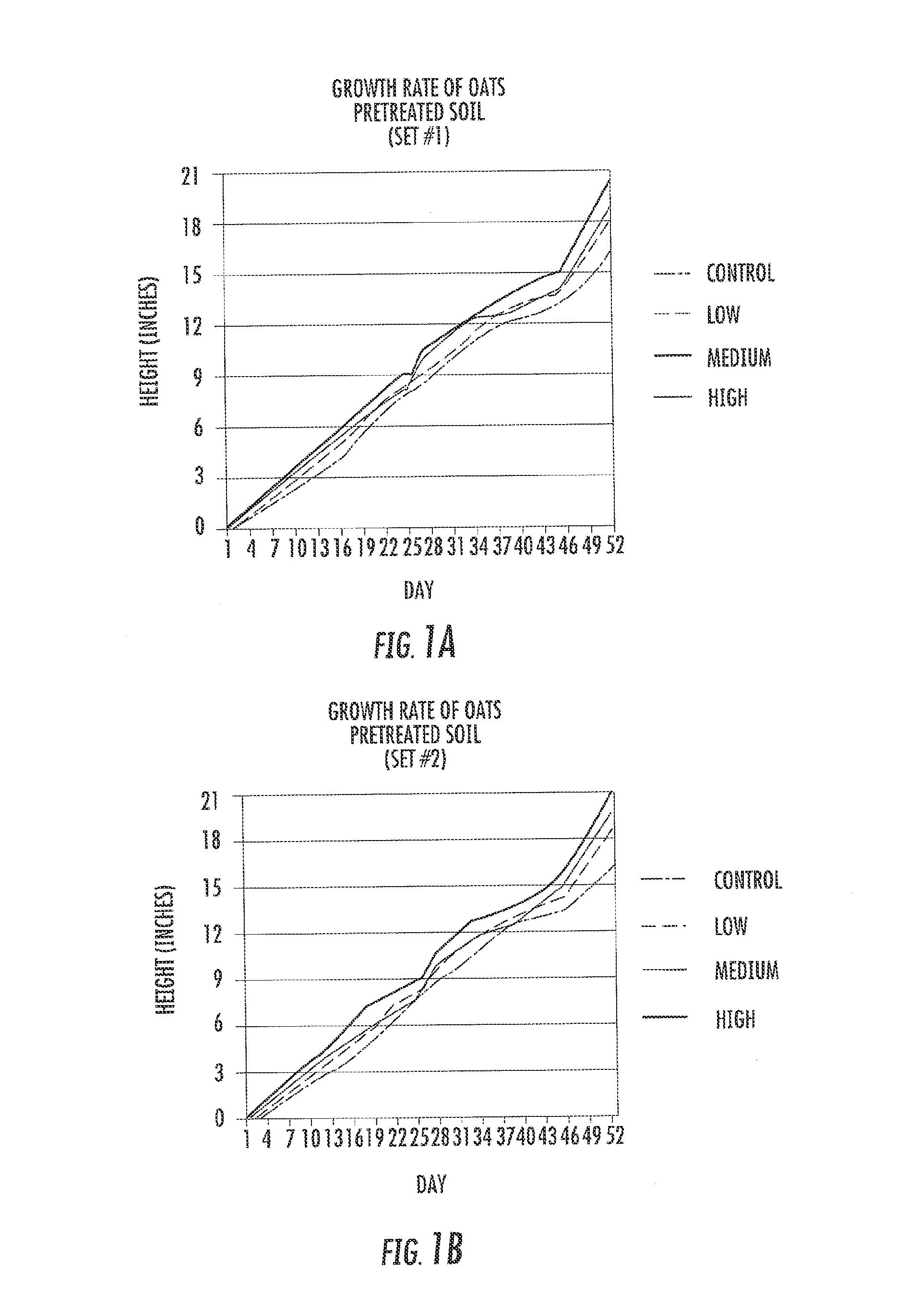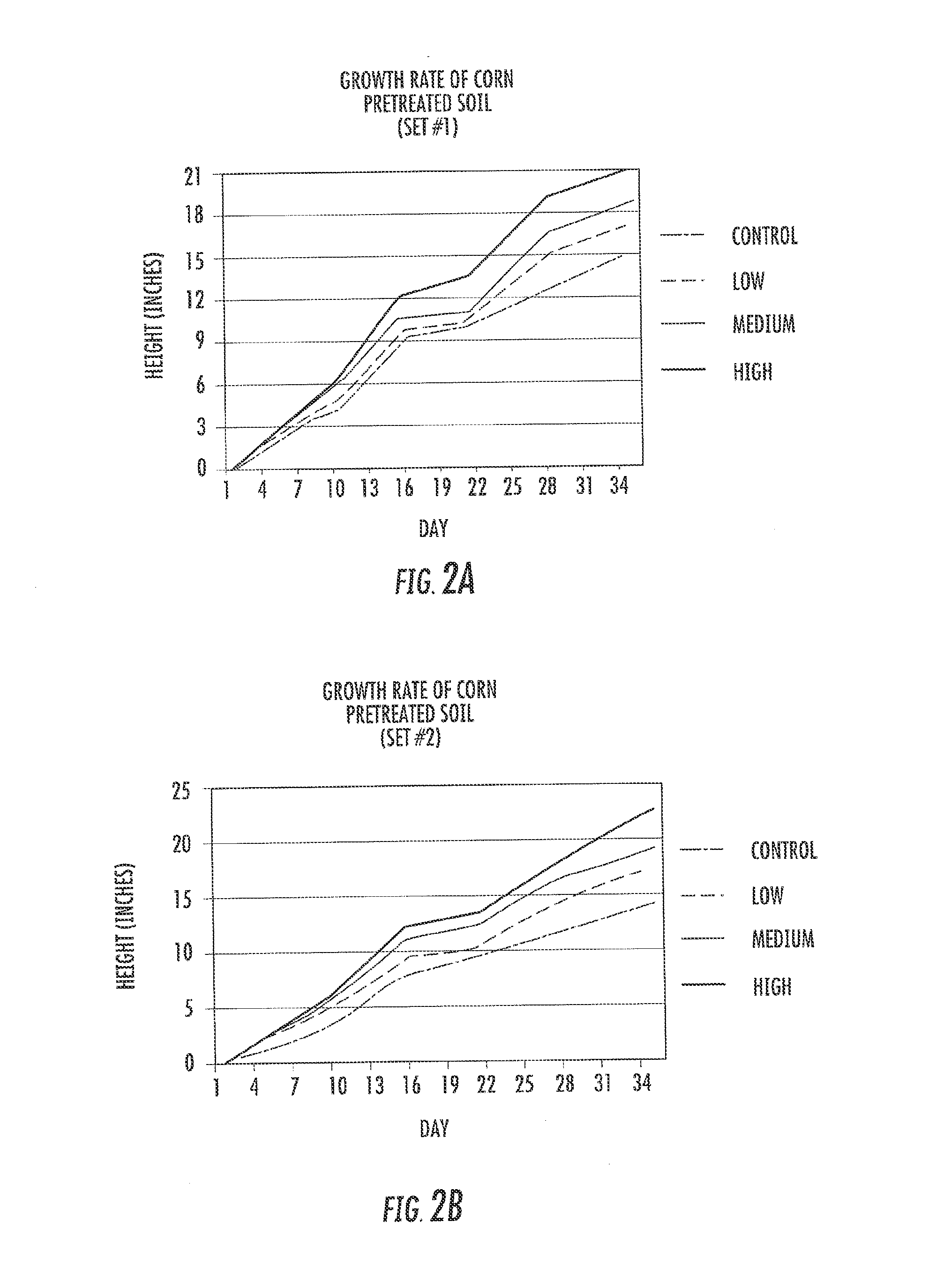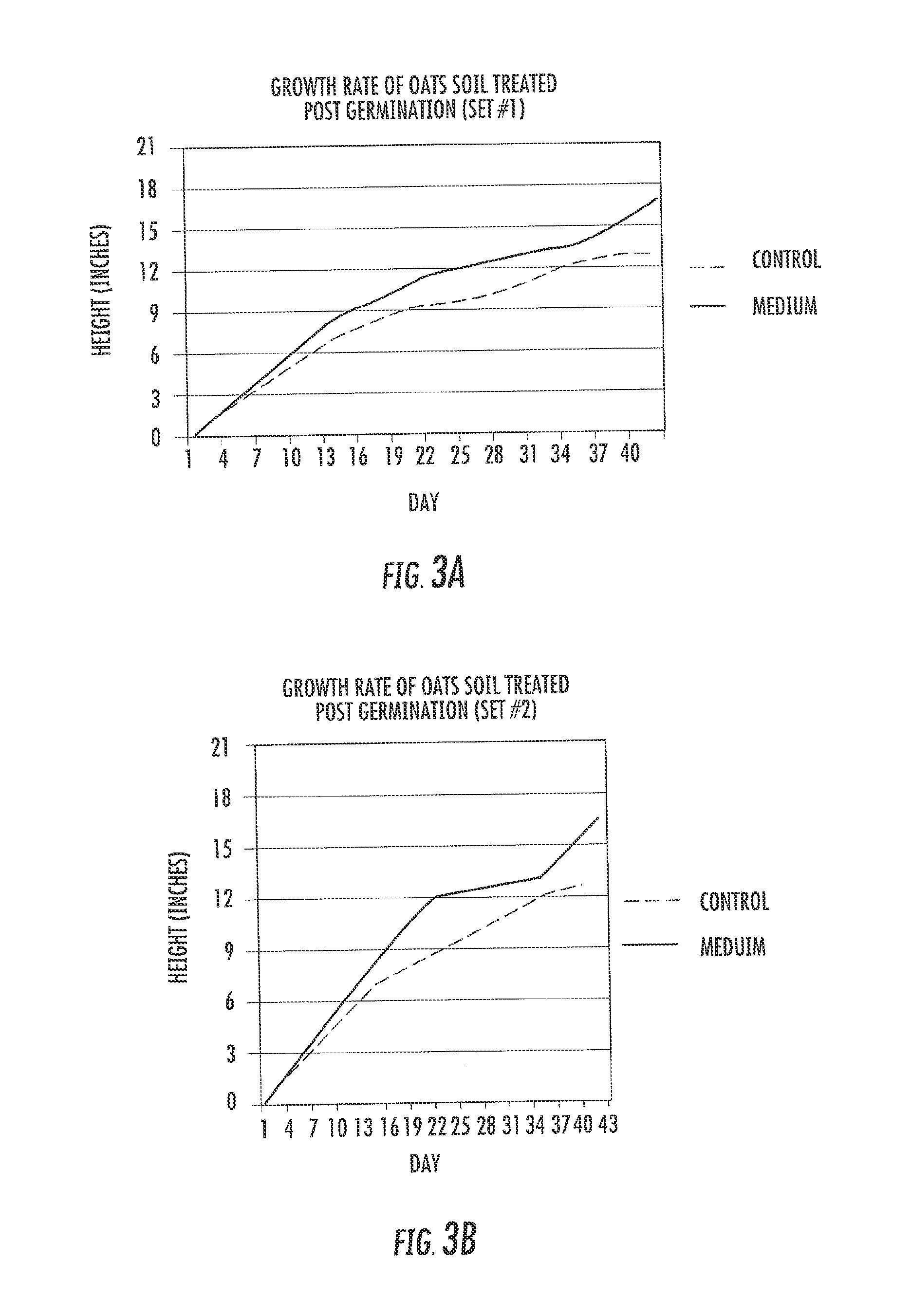Use of Pseudomonas Diazotrophicus as a Soil Inoculant
a technology of pseudomonas diazotrophicus and soil, which is applied in the field of use of pseudomonas diazotrophicus as soil inoculant, can solve the problem of not being useful to plants
- Summary
- Abstract
- Description
- Claims
- Application Information
AI Technical Summary
Benefits of technology
Problems solved by technology
Method used
Image
Examples
example 1
[0039]This example demonstrates a method for preparing an inoculant comprising Pseudomonas diazotrophicus and a carrier.
[0040]A growth media was prepared by dissolving dry beef base and peptone in water, and sterilizing by autoclaving at 250° C. for 15 minutes. The growth media was cooled, transferred to a flask, and inoculated with a swab of Pseudomonas diazotrophicus. The culture was incubated until sufficient growth of Pseudomonas diazotrophicus had been attained. The culture was transferred to a refrigerator to halt the growth of the Pseudomonas diazotrophicus.
[0041]To prepare the inoculant, the culture of Pseudomonas diazotrophicus was diluted with water at a concentration of 1 / 200, 1 / 100, or 1 / 40.
[0042]This example provides an inoculant comprising Pseudomonas diazotrophicus and a carrier, as well as a method for its production.
example 2
[0043]This example demonstrates a method of producing a plant by applying an inoculant comprising Pseudomonas diazotrophicus and a carrier to a medium before planting a seed of the plant in the medium, and allowing the medium to be present under conditions which allow the Pseudomonas diazotrophicus to fix nitrogen and the seed to mature into the plant.
[0044]Trays of soil were treated with an inoculant comprising Pseudomonas diazotrophicus diluted in water at a concentration of 1 / 200 (“low”), 1 / 100 (“medium”), or 1 / 40 (“high”). For comparison, control trays were treated with water only. Seeds of oat or corn were planted into the trays, and the trays were placed into a greenhouse. Each tray contained 12 seeds, and each experimental group was performed in duplicate (i.e., Set #1 and Set #2). The growth and health of the plants were recorded at regular intervals. Control and treated trays were subjected to the same conditions, except for the Pseudomonas diazotrophicus exposure.
[0045]The...
example 3
[0048]This example demonstrates a method of producing a plant by applying an inoculant comprising Pseudomonas diazotrophicus and a carrier to a medium after planting a seed of the plant in the medium, and allowing the medium to be present under conditions which allow the Pseudomonas diazotrophicus to fix nitrogen and the seed to mature into the plant.
[0049]Trays of soil were planted with oat seeds and placed into a greenhouse. After the oat plants had emerged from the soil, the trays were treated either with an inoculant comprising Pseudomonas diazotrophicus diluted in water at a concentration of 1 / 100 (“medium”), or water only (“control”). Each tray contained 12 oat seeds, and each experimental group was performed in duplicate (i.e., Set #1 and Set #2).
[0050]The height of each oat plant was measured every three days, and the average oat plant heights for the Pseudomonas diazotrophicus-treated and control groups were calculated. The growth rate of oat plants which received the Pseud...
PUM
 Login to View More
Login to View More Abstract
Description
Claims
Application Information
 Login to View More
Login to View More - R&D
- Intellectual Property
- Life Sciences
- Materials
- Tech Scout
- Unparalleled Data Quality
- Higher Quality Content
- 60% Fewer Hallucinations
Browse by: Latest US Patents, China's latest patents, Technical Efficacy Thesaurus, Application Domain, Technology Topic, Popular Technical Reports.
© 2025 PatSnap. All rights reserved.Legal|Privacy policy|Modern Slavery Act Transparency Statement|Sitemap|About US| Contact US: help@patsnap.com



